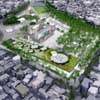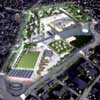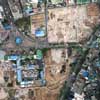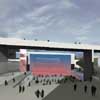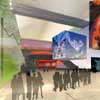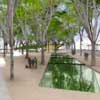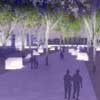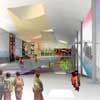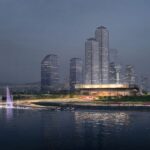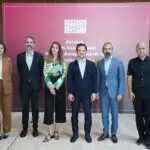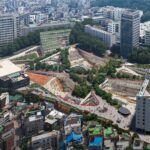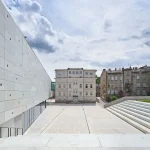Asian Culture Complex, Gwangju Building, Korean Project News, Design Images
Asian Culture Complex Korea : Gwangju Architecture
Gwangju Development in Korea, Asia design by Kyu Sung Woo
9 Mar 2009
Asian Culture Complex
Architect Kyu Sung Woo Designs Iconic Asian Culture Complex
Architect Forges Innovative, Earthfast Landmark Celebrating Democracy and Creativity
CAMBRIDGE — Architect Kyu Sung Woo, based in Cambridge, Massachusetts, has designed the Asian Culture Complex, establishing a new touchstone for May 18th Democracy Plaza in downtown Gwangju, South Korea. In a setting associated with the nation’s historic pro-democracy rallies, the Asian Culture Complex is a living commemoration celebrating the egalitarian, progressive nature of architecture and the performing and visual arts. Woo’s innovative design exploits natural light, with glass cube skylights, light tubes, clerestories, light shelves, and transparent scrims, to create a literal connection with nature and a spiritual one to Korea’s “City of Light.”
The new landmark’s below-grade construction carves an innovative architectural core in a 1.4 million square foot public landscape. Taking as its themes flexibility, light, and connection to nature, and conceived as an integral part of the city fabric, memorial plaza, and associated historic buildings, the new structure is nestled in a landscape featuring 300 flowering Golden Rain trees, along with groves of bamboo and Korean Pines, virtually bowing to its surroundings. A Visitor Center, in a former Police Administration Building, showcases exhibits about democracy movements throughout Asia.
The design strategy for the ACC, centered on creating a new park and building within the earth, responds to the climatic conditions of Gwangju. The climate concept for the project emerges from a thorough consideration of the totality of the building from a thermodynamic perspective. Form, material, and mechanical systems combine as synergistic components of a unified concept. Visitors access the Complex from numerous entry points, including links to subways and major entrances on the south, west and north.
Escalators and inclinators, and ramps connect levels of the plaza and interior, creating a barrier-free environment. Sustainable systems, such as optimal daylight design, earth-contact pre-heating and pre–cooling, slab-embedded hydronic radiant heating and cooling, and a 100% outdoor air low-pressure displacement ventilation system, qualify the structure for the highest rating by Korea’s Green Building Council. This strategy will generate energy savings of up to 40% over a conventionally conceived building.
The roof of Woo’s earth-fast structure is a grassy Citizens Park, with shaded bamboo groves, play environments and welcoming lawns. From the park, ramps descend along the structure’s exterior, through a series of stepped outdoor plazas, which showcase key elements, such as the Jemyong Stone Lamp and Five-Tiered Stone Tower, and support seasonal activities, markets, gatherings, events, and political rallies. These plazas, cooled by large air circulators generating subtle breezes, can be transformed with temporary fabric canopies for a festive atmosphere or temporarily flooded with thin layer of water for seasonal variety.
Along their core runs a continuous glass façade, which provides light, transparency, and views to the cultural activities in the Complex’s interior spaces. At the deepest part of the structure, double layers of glass silk-screened with traditional Korean motifs, infuse the building’s skin with a subtle celadon glaze. There, inside, a 25-meter-high atrium or “light box” defines a lofty exhibit space and an Art Plex with flexible performance halls and multimedia theater offers a stream of new programming.
Envisioned as a physical world and a broader virtual world for cultural participation, cultivation, and creation, the Complex incorporates a decentralized Children’s Museum and several venues, including a digital M&E lab and a resource Complex, to foster the development of cultural content and activities.
A high tech infrastructure incorporates rapidly advancing information, digital and nano technologies, wireless computing, media, dialogue, and interaction between new technologies, affording countless opportunities for creating and producing cultural offerings of every kind. As programs grow, change in character, or are replaced, the Complex’s spatial boundaries and characteristics can be adjusted to meet specific needs, evolving technologies, and an unknown future.
Asian Culture Complex Gwangju images / information received 090309
Location: Gwangju, South Korea, East Asia
South Korea Architecture
Contemporary South Korean Architectural Selection
South Korean Architecture Designs – chronological list
South Korean Architecture News
Korean Architecture – Selection:
Ulju Government Complex, Ulsan, South Gyeongsang
Design: Samoo Architects & Engineers
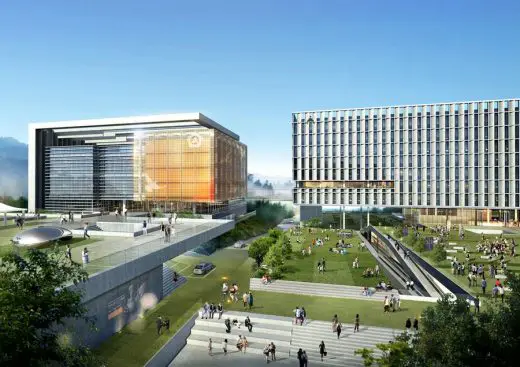
image from architecture firm
Ulju Government Complex in South Korea
French Restaurant, Sinsa-dong, Gangnam-gu
Design: BANG by MIN emerging design group
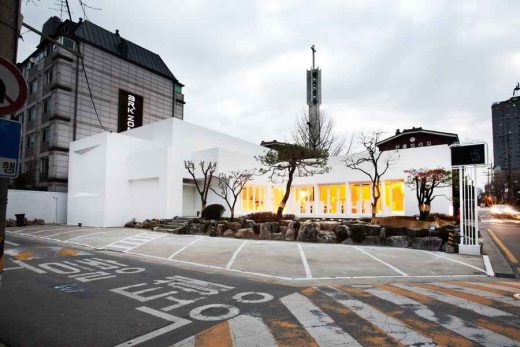
image : Choi, Jungwoo
French Restaurant in Seoul
Busan Cinema Center : Architecture competition winner
Korean Design Competition : Incheon Metropolitan City, 2009
Comments / photos for the Asian Culture Complex Korea Architecture page welcome

